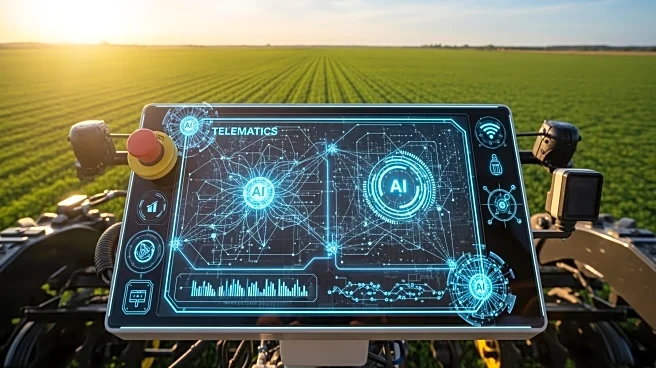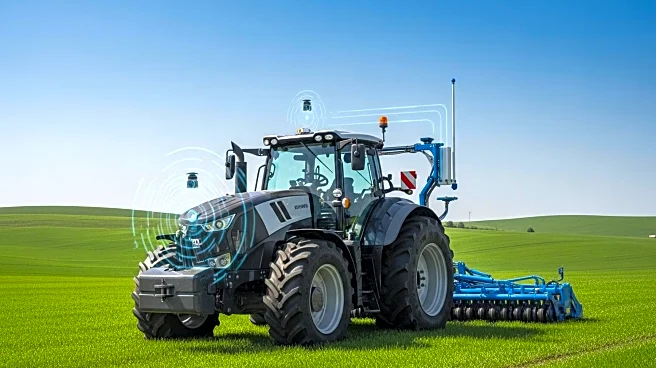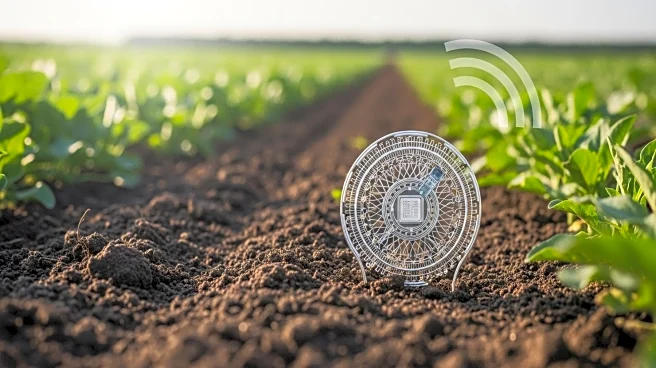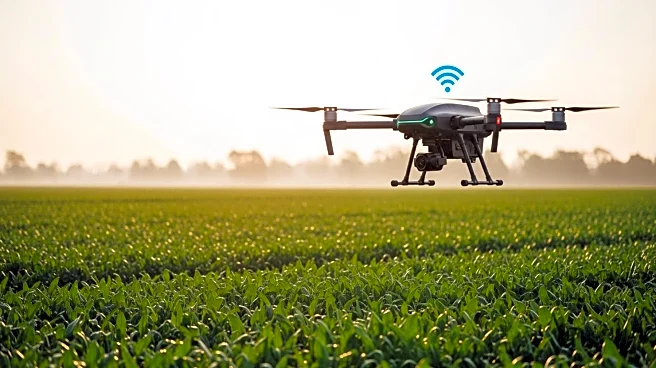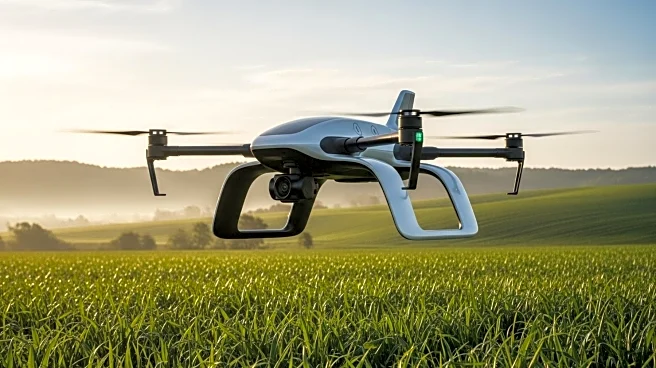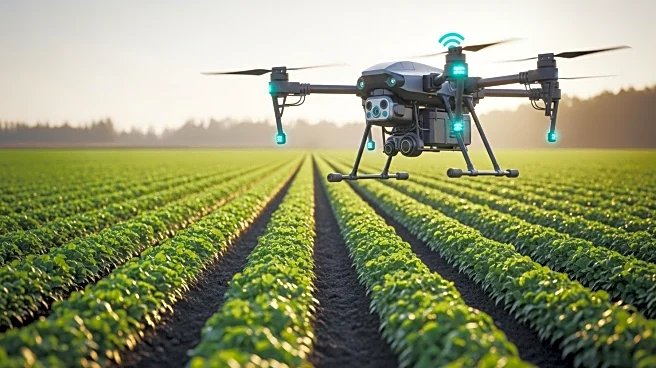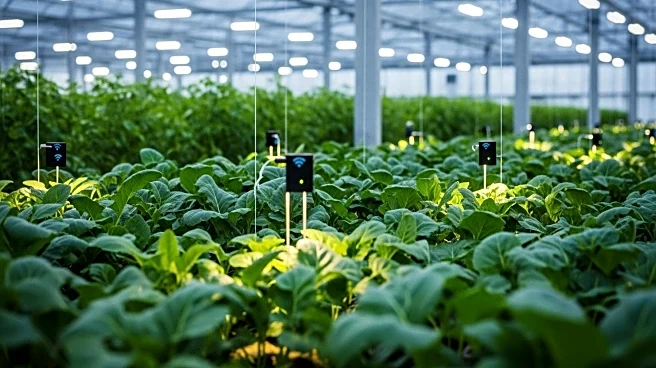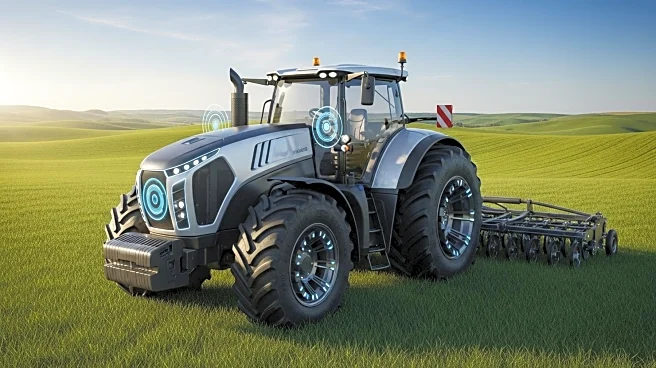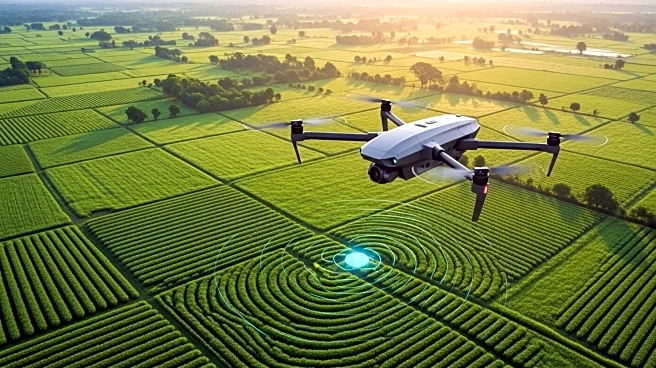What's Happening?
The Agricultural Machinery Telematics market is expected to grow significantly, with projections indicating an increase from $2.3 billion in 2024 to $7.6 billion by 2033. This growth is driven by the rising
demand for precision agriculture and data-driven farm management. Telematics technology, which integrates GPS, IoT sensors, and data analytics, is enhancing operational efficiency and productivity in the agricultural sector. It provides farmers with real-time insights to optimize planting, irrigation, and harvesting processes, thereby reducing costs and increasing crop yields. Government initiatives and subsidies are also promoting the adoption of smart farming practices, including telematics solutions.
Why It's Important?
The expansion of the Agricultural Machinery Telematics market is crucial for the agricultural industry as it faces increasing pressure to optimize yields and reduce operational costs. Telematics technology offers a transformative solution by enabling real-time monitoring and remote diagnostics, which can significantly enhance operational efficiency. This growth is expected to foster the adoption of smart farming practices, contributing to sustainability and compliance with evolving standards. The integration of telematics with autonomous machinery and AI-driven analytics presents opportunities for companies to develop scalable solutions, benefiting small and medium-sized farms worldwide.
What's Next?
The future of the Agricultural Machinery Telematics market looks promising, with continuous innovations in AI, IoT, and autonomous farming technologies. As global demand for food rises and sustainability becomes a priority, farmers are likely to increasingly adopt telematics to optimize resource use and enhance productivity. The integration of telematics with next-generation analytics, cloud platforms, and drone-assisted monitoring is expected to create smarter, fully connected farming ecosystems.
Beyond the Headlines
The adoption of telematics in agriculture not only improves operational efficiency but also addresses labor shortages by enabling remote management and automation of machinery. This technology reduces dependence on human labor, which is particularly beneficial in regions facing labor scarcity. Additionally, the use of 5G and low-power wide-area networks (LPWAN) is improving connectivity and data transmission in remote agricultural areas, further enhancing the capabilities of telematics solutions.
